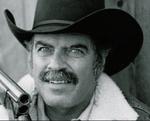Of all the laws pertaining to big game, it’s my belief that the requirement of determining a legal animal by making a field judgement call on antler or horn measurements is the most difficult to abide by.
Take, for example, the requirement that in many hunting areas in Alaska a legal moose must have a minimum spread of 50 inches, unless it has a certain number of brow tines, and that depends on which area you’re hunting in. It’s incumbent on the hunter to make that call. Trying to measure a moose’s antlers when it’s out there in the willows is a wild guess, even if it’s standing still looking at you. But in many cases it’s walking in vegetation or positioned so you can’t really see the antlers well, or it’s running away.

The obvious answer if you aren’t sure of the legality of the animal is not to shoot. Having said that, every circumstance is different. Say, for example, you’re on your dream hunt for a bull moose. It’s been on your bucket list for years. It took you a long time to save up enough money to afford the hunt. On the last day of the hunt you still haven’t scored and you’re despondent. Suddenly, with just a few hours left of the last day you see a bull. He looks big, and you hope and pray he’s over 50 inches, but you’re not sure. Of course. How can you be sure if you must measure his antler width at a distance? Your buddy swears it’s 50 inches. You’re still not convinced but you shoot anyway and say a prayer that the bull is legal.
The shot is good. You quickly approach the bull and jerk a measuring tape out of your pocket and are devastated to learn that the spread is 48 and 1/2 inches. You’ve broken the law. To be legal you must contact a warden immediately. Or, you can simply walk away and hope you’re not caught. If you are, you’re in serious trouble.

While this 50 inch measurement has been implemented by wildlife biologists who are savvy about moose management, it’s obviously one that requires a great deal of restraint. Guessing is never an option. Some veteran guides and hunters have had enough experience that they can make reasonably accurate measurements.
On an Alaska hunt my guide and I observed a bull moose in a willow bottom. He called it a “scary moose.” When I asked why, he said it was so close to 50 inches that it would make him nervous if his hunter didn’t care about killing a monster bull. Later on that hunt we saw a seriously big bull. Neither of us had to take a second look. We knew it was legal. I put him down and the tape showed he measured 64 inches outside spread.
In many states, a whitetail buck must at have least 3 inch spikes to be legal. Again, that’s a tough judgement call if the buck is small. In other states, where Quality Deer Management Association rules apply, a legal buck must meet the minimum requirements.
I know an outfitter who established a minimum antler score in order for the buck to be taken by a hunter. If the hunter misjudges the buck and it’s too small he pays a $1,000 penalty. Fair? I hardly think so.
While it seems like these regulations should be easy to follow, veteran hunters know there’s far more to it than simply looking at an animal and estimating his headgear. You must factor in the experience of the hunter, as well as his/her state of mind when a buck is tearing through the laurel and greenbriers. There’s not much time to react, and an excited brain may cause the hunter to take an iffy shot. This is especially true if you’re in an area with low hunter success, overcrowding by hunters, and the chaos of the moment.

In Colorado, which has more elk and more elk hunters than any other state, most hunt areas require a legal bull to have a least four points on one antler OR a brow tine at least 5 inches long. The intent is to increase the number of branch antlered bulls reaching 2 or more years in age. Fair enough. Most raghorns will have at least 4 points on one antler but some will not. Even though points are easy to see, unlike guessing a length measurement, it might not be so simple when a bull is tearing through an aspen stand or running in thick oak brush.
Sheep can be extremely difficult to judge when laws require a legal ram to be 3/4 curl. In order to estimate this you must draw an imaginary line down the face. Imagine the challenge of doing that when the ram is running or is looking straight at you or is in a position where it’s almost impossible to see the side of the head.

I once drew a desert sheep tag in Utah where a legal ram had to be at least 7 years old or score 144 B&C. A mandatory orientation was required prior to the hunt where hunters were required to accurately judge ram skulls that were placed on sawhorses 100 yards away. To me, this was a ridiculous rule. Counting age rings at best is tough even if the head is in your lap. Determining an accurate B&C score was also almost impossible on a distant, moving ram. While at the orientation we had to have a mandatory spotting scope. While it was enormously helpful with the sawhorse ram heads, it was next to useless on a ram bounding through the rocks.
Luckily, many states have dropped the curl rule. Any ram is legal. While that may be argued biologically, it’s a known fact that many illegal rams have been abandoned and left to the coyotes, and we all know what SSS means. (Shoot, shovel and shut up.) What that means is that the hunter could then kill two rams if he’s unethical.
In every scenario I mentioned here, there’s only one solution. If you are in doubt, even slightly, do not shoot. We might not like the laws, but there are reasons for them. Ignorance of the law is never an excuse, but even when we are aware of the minimum antler restrictions it’s always best to never give in to temptation even though there might be a great deal of stress on your part.















Thanks for this, Jim. I don’t hunt as much as I’d like and part of it is the complication involved. I respect the laws and reason for them, but honest mistakes are far too easy and while I like to think I’m a decent man, the temptation to SSS scares me. Also, in ways, the idea of shooting the biggest buck with the biggest rack has always seemed to contradict the Darwinian idea of improving the herd. I’m sure there’s a valid argument that shows my logic to be off, but at this stage of my life, at least with deer, I’m happy with a scrub buck in the freezer or a few days of gun camping and gun hiking every now and then. Should I ever get the opportunity to hunt sheep, elk or moose, I’m sure my attitude on that will change. Thanls again.